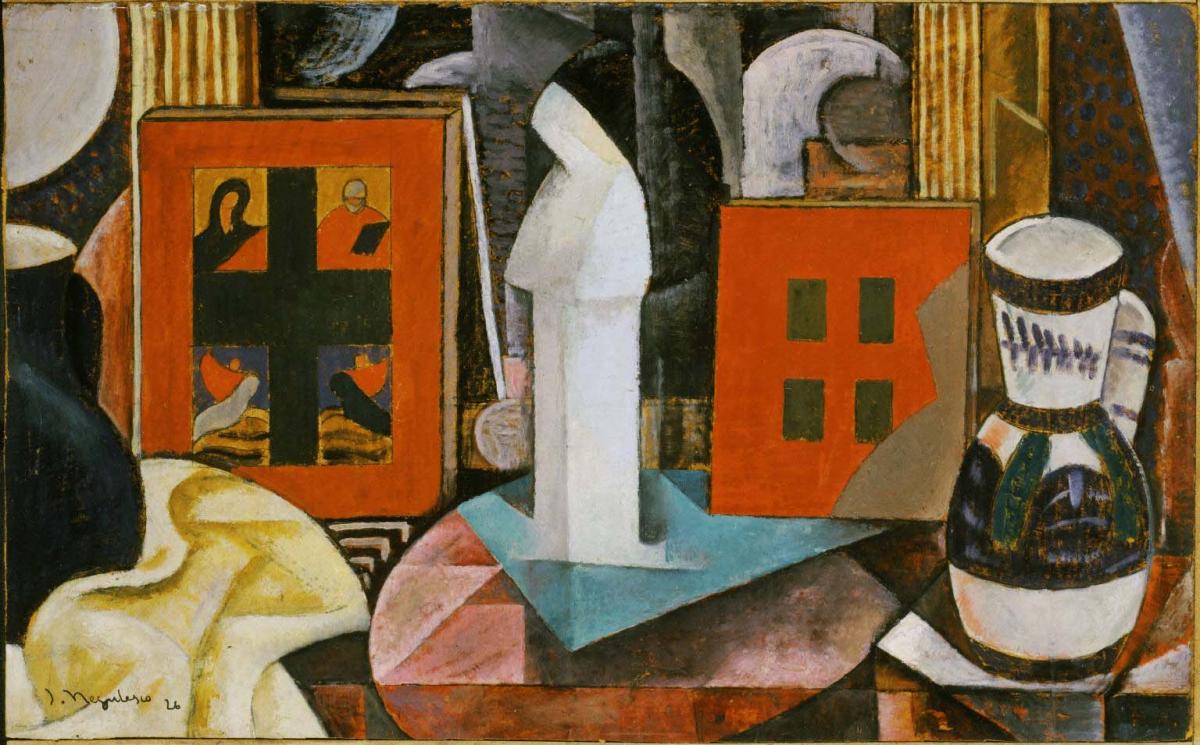Roumanian Still Life
Jean Négulesco ( 1926 )

When Jean Négulesco first moved to the United States in 1927, he earned his living as a portrait painting. Duncan Phillips saw him as a romanticist who “turned experience into expression with implicit reliance upon his own instincts and emotions.” Négulesco’s style ran the gamut from academic realism, to cubism, to abstraction. “Color is his chief consideration in painting,” Phillips wrote, “and to it he abandons himself according to his mood. If he is excited with the light of the world, or with an exotic pattern in still life, his palette is keyed to a tonic clash of chromatic intensity….A brilliant future can be predicted for an artist who evidently loves life so much, sees it variously, and responds to it so sensitively.”
Négulesco had given up painting by 1940, becoming a major player in Hollywood, but before this move, he painted many beautiful still lifes, several of which Phillips collected, including Roumanian Still Life. Négulesco painted Roumanian Still Life in 1926, just before he moved to the US. The painting is a cubist work, reflecting his great knowledge and admiration of Pablo Picasso and Fernand Léger. Négulesco used Romanian iconography—specifically the religious symbols—to reflect his culture and ancestory. The somber palette of black and red reflects this quite religious theme of penitence. Roumanian Still Life is Négulesco’s way of paying homage to his heritage.